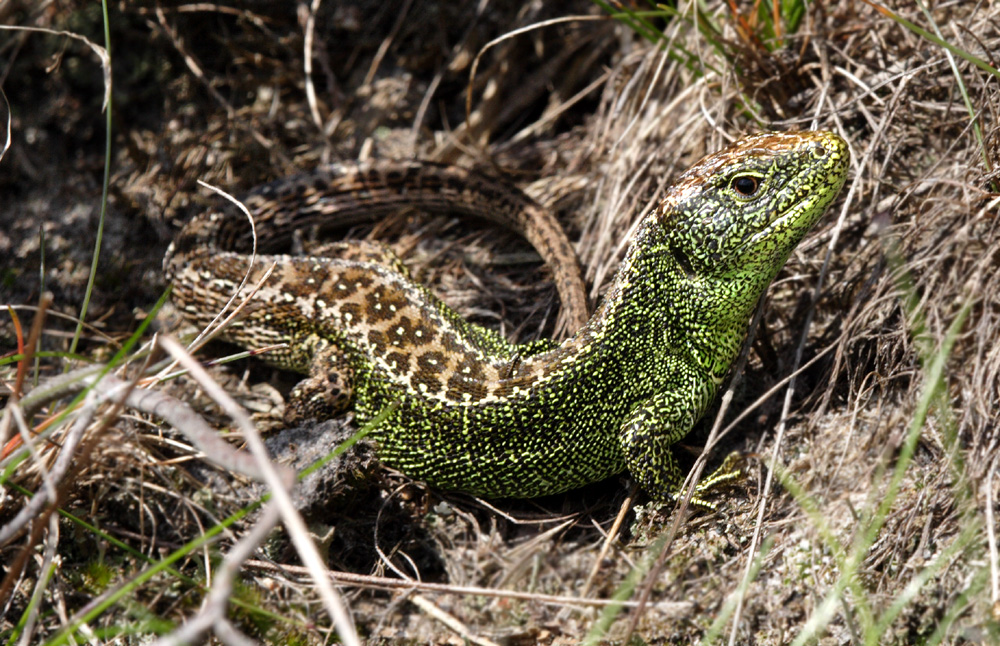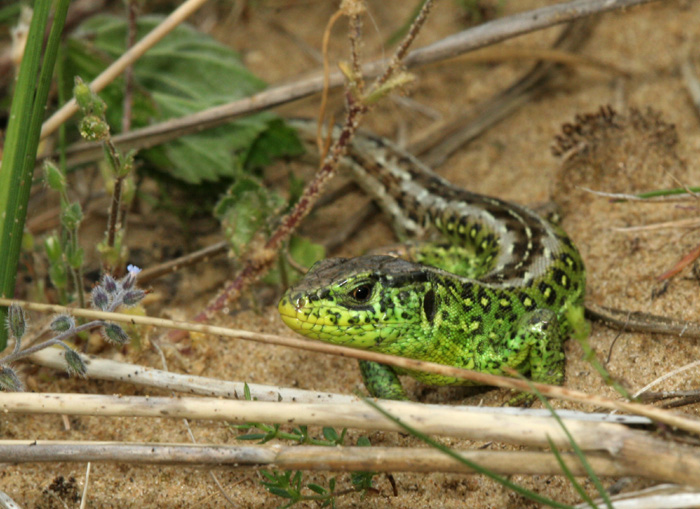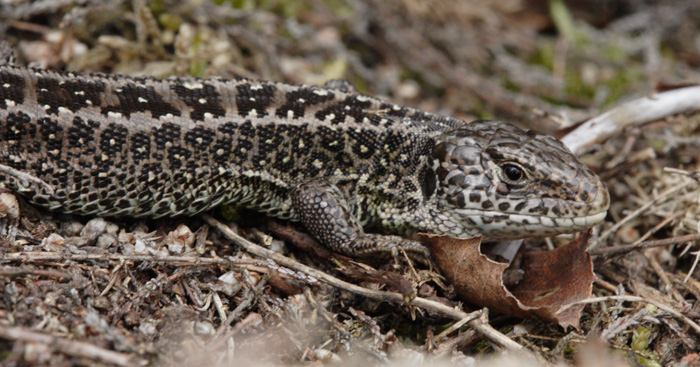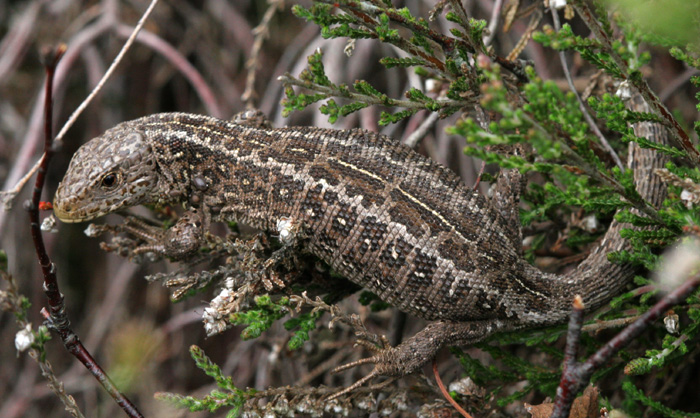Nomenclature
| Common name: | sand lizard | |
| Taxonomy: | (Linnaeus 1766) |

A rare, yet beautiful male Sand lizard in full mating moult.
The Sand Lizard is the United Kingdom's rarest native lizard; it is totally harmless to man.
In the UK, the Sand lizard is a specialist of heathland and dune habitats, and native populations can be found in the south of England in the counties of Dorset, Hampshire, Surrey, West Sussex and on the Lancashire coast at Sefton.
A long-standing introduced colony is located on the inner-Hebridean island of Coll and recent re-introductions have expanded its range to the Kent and Welsh coasts.
Like all UK reptiles, the Sand lizard is a carnivore, whose diet is mostly restricted to invertebrates, although any small moving creature may be instinctively taken, sometimes including their own young.
Sand lizards grow to a length of about 8 inches (20cm), with the tail accounting for about half of this length. They can reach an age of twenty years in the wild, in exceptional circumstances.
An individual Sand lizard can have a home range of between 85-2000m2



